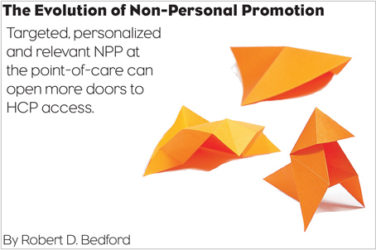Angelina Jolie made worldwide news for her bold decision to have a double mastectomy after testing positive for BRCA1 gene mutation. With limited treatment options and the high probability of breast and ovarian cancer a threat, she chose a prophylactic procedure to remove the risk. Her decision was based on in-depth understanding of the molecular drivers of the disease and a prognostic model specifically associated with the BRCA1 gene. In the six months following her announcement, a surge in genetic testing occurred, with the number of women referred to genetic counselors increasing by 90%, and the number of women qualifying for genetic testing increasing by 105%.1
While Jolie’s case drew global attention, a new, emerging model of care began and is rapidly evolving to help millions of people with rare and/or complex diseases. It is called “precision medicine.” And it may be key to a healthier future for both patients and a healthcare system struggling to find the financial resources for increased new therapy costs.
The New Normal in Healthcare
Changes now continue at a miraculous pace, with significant clinical advancements made daily. But it costs. Many new drugs launch at premium price points, and payers struggle to find resources to cover them. In hepatitis C, a number of highly effective, yet extremely expensive, new therapies are emerging, but some states started withholding newer medications from patients not at immediate risk from their disease, who can tolerate less-effective options, or whose lifestyle choices and behavior increase their risk of re-infection to avoid “wasting” an expensive regimen.
As the healthcare system navigates the changes stemming from the Affordable Care Act (ACA), many challenges remain. How will the components of insurance coverage change? What will the future look like for the financial health of hospitals and medical groups? How will the emphasis on quality and patient outcomes evolve over time?
Trends show increasing healthcare utilization and that adds to cost pressures for payers, providers and patients. As more previously uninsured people obtain insurance, physician visits rapidly increase, along with testing and higher prescription volume. Insurers will need to adjust pricing to accommodate increased service levels.
Even patients feel increased cost pressures—insurance requires payment for premiums, deductibles, co-payments and coinsurance. Each player will widen their cost-management efforts. Insurers will raise members’ medical cost responsibility, implement narrow provider networks and restrict more expensive drugs, devices, or other interventions until lower-cost alternatives (e.g., generic drugs) have first been tried.
For providers, new care delivery models, such as patient-centered medical homes, now use a lead physician to coordinate care, avoid duplication and waste as the patient moves from generalist to specialist or from outpatient to inpatient settings.
Lastly, increased pressure is placed on patients to optimize their treatment outcomes. As patients face higher payments and increased financial responsibility, they quickly become careful consumers, balancing their own health with the perceived value of a drug.
Optimizing Value Through Precision Medicine
In the midst of this activity, precision medicine emerges as a method to improve patients’ chances of treatment response. It also provides a new tool to ensure that the high cost of these drugs is spent on the patients who are most likely to respond to treatment. Healthcare providers, insurers and patients can save money, time and deleterious side effects.
Precision medicine evaluates the patient’s genetic make-up, and/or the characteristics of the disease, and matches patients to the therapy most appropriate, and most likely to succeed. Through careful evaluation of biomarkers, we can now effectively diagnosis patients, assess risk factors, inform treatment decisions and reliably predict response to therapy and the likelihood of relapse or recurrence in some disease types.
Over the past decade we’ve seen a revolutionary advance in the development of targeted therapies specifically designed to inhibit a particular protein or mutation. Chronic myelogenous leukemia (CML) is a relatively rare disease (approximately 5,000 new cases a year in the U.S.) characterized by the presence of the BCR-ABL protein. For years, CML was considered a subtype of leukemia, but the groundbreaking introduction of selective BCR-ABL inhibitors ushered in a new age of precision medicine. Now patients with the BCR-ABL protein are often regarded as having the “good” cancer, because while a response isn’t guaranteed, the physician, patient and payer can all feel confident that the majority of patients will succeed on these high-cost therapies.
However, despite significant advancements, to fully realize the clinical and financial value of precision medicine, numerous challenges remain that must be overcome.
- Biomarkers must be validated and actionable. If treatment and reimbursement decisions based on biomarkers are to be valued and used, they should not be second-guessed. Careful evaluation of potential biomarkers—prior to and throughout drug development—must be undertaken to understand their true prognostic value and inclusion in treatment guidelines. For example, in non-small cell lung cancer, the ALK+ mutation is a well-established treatment biomarker but testing is often not performed due to the limited numbers of patients with the mutation and the cost and difficulty of performing the procedure. As such, many patients with ALK+ mutation receive a suboptimal treatment alternative.
- Education and knowledge must be universal. Rare and complex diseases require a multi-disciplinary team (e.g., oncologist, pathologist, nurse, surgeon, etc.), and all stakeholders must be properly informed about the biomarker benefits and the crucial role each plays in advancing precision medicine. For instance, in many cases, obtaining an adequate sample or tissue for testing is difficult; understanding the challenges and needs of each team member and maintaining an open and continuous dialogue can ensure that the patient’s specific needs are met.
- Standardize testing and improve accuracy. Precision medicine is often undermined by variations in testing protocols and procedures. Many of the large centers of excellence have their own institution-specific techniques and laboratory equipment, making comparison of test results between facilities difficult.
Our Role as Marketers of Products for Rare or Complex Diseases
As marketers, we play a key role in advancing precision medicine in rare and complex diseases. We have a unique opportunity to effect true change, which includes identifying ways to demonstrate product value. But we must change our approach to:
- Expand Reach Beyond Traditional Target Stakeholders. Think beyond conventional stakeholders (e.g., HCP, nurse) to include broader multidisciplinary team members. Many new products launch with companion diagnostics, established biomarkers, or a highly selective mechanism of action—a broader educational plan is necessary to optimize awareness and appropriate use of these products. Marketers need to re-evaluate segmentation plans and invest resources where they have the greatest return on investment.
- Actively Engage Patients as Advocates for Their Own Care. As the role of the patient changes, we need to engage them with practical knowledge and actionable insights. With increased financial responsibility and information, the patient, more than ever, exerts a bigger impact on treatment decisions. Information must be simplified and clarified across all audiences to overcome the deluge and confusion of available data (e.g., use of infographics).
- Recognize the Unique Opportunity that Rare Disease Product Marketers Have To Reach Patients—One that Does Not Exist in Other Diseases. For many of these patients, advocacy groups are limited, educational tools are unavailable and they are actively seeking other “patients like me” who are on a similar journey. Finding these patients and providing the information and tools they need can help create brand loyalists within the patient community who often share experiences and seek advice from each other.
- Leverage the Science To Validate the Value Proposition. In general, the cost for specialty products is high, and communicating a compelling value story is an essential element of overarching brand benefit. For brands launching with a biomarker or companion diagnostic, the value of these prognostics tools cannot be understated and must be established as early as possible—from initial clinical development through its entire lifecycle. Appropriate patient identification can help optimize treatment success and negate many cost concerns.
- Adapt Messaging To the Evolving Financial Landscape. It’s not only the payers and employers who talk about cost—it’s also the physicians and the patients. The cost dialogue between physician and patient is complex. Greater understanding will help marketers inform and manage these discussions. We must consider using market research to evaluate how physicians are communicating value and what role the patient has in decision-making. Then we must reinforce with clinicians how they can communicate our value proposition to patients.
- Optimize Key Opinion Leaders (KOLs). KOLs are always important motivators of brand choice and decision-making, especially in rare diseases. Physicians often do not have the time or resources to focus on a few patients, so they often seek guidance from peers, thought leaders and clinical guidelines. A concerted effort must be made by specialty marketers to maintain an open dialogue to help identify trends, potential barriers and insights to optimize your brand’s messaging.
The rising cost of healthcare concerns everyone. Choosing the therapy best suited to individual patient needs is of greater importance with each new specialty drug that launches. By recognizing the value of precision medicine, developing a clear and compelling value proposition and appropriately educating all audiences, marketers can profoundly impact the health of the patient and the healthcare system itself.
References:
1. Raphael J, Verma S, Hewitt P, Eisen A. “The Impact of Angelina Jolie’s (AJ) Story On Genetic Referral and Testing at an Academic Cancer Centre.” J Clin Oncol. 2014;32 (suppl 26; abstr 44).







